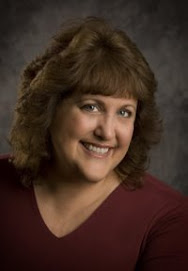 A self-published author recently sent me the following email message:
A self-published author recently sent me the following email message: "I conducted a book signing at my local Walden bookstore and when one of my friends tried to purchase my book a few weeks later, she was told that I was not
in their database. How can I get my self-published book stocked in a real bookstore?"
This is the dilemma for self-published authors -- most booksellers do not want to stock self-published books in their stores, for many reasons: 1) booksellers order thousands of books per year and don't want to have to order from individual publishers. Instead, they order through wholesale distributors like Baker & Taylor or Ingram, where they can place one order for all the different books they want at once; 2) booksellers don't like having to wait for POD books to ship; they would rather order from a distribution company, which has the books already there in its warehouse; and 3) many print-on-demand books are, to put it kindly, subpar -- they have not been edited and/or reviewed before they are printed, so some booksellers feel that self-published books, in general, are not high quality (whether that's true or not, they have that stigma attached to them).
So, what can be done if your book is self-published?
1) If you want to get your book into stores, it's important to have it listed with a distributor. There are a number of independent distributors, like Pathway Book Service or Greenleaf Book Group, that handle distribution for self-published authors. Some of the wholesale distributors, like Ingram, also have divisions for self-published books. If your book is listed with a distributor, you have a much better chance of getting it into independent and chain bookstores. And, in addition to warehousing and shipping your books, distributors can help with other aspects of marketing including sales promotions, negotiating with buyers, order tracking and reporting, and mailing list maintenance.
2) Some of the bigger booksellers, like Barnes & Noble and Borders, have their own distribution centers. To get into those, you have to approach their small press divisions and ask if they are willing to sell your book in their stores. Both of these companies require that you send a marketing plan for your book, along with one or more copies of the book and a cover letter, to the small press division. You’ll typically receive an answer within a few weeks.
3). Even if Barnes & Noble and Borders won't accept your book through their small press divisions, individual store managers can still order from you directly, if they choose to do so. That's why it's so important that you still try to do signings in as many bookstores as possible. If you hold a successful signing in a store, the bookseller may be willing to order copies (although Borders assigns its own numbers, called "BINC" numbers, to books that it carries, so if your book is not in the Borders system, a store manager may not be able to order it).
If you don't do signings, it's difficult for individual booksellers to know about you or your book -- that's why making appearances at bookstores (even with a low turnout) is so important, especially the first six-eight months after a book is released. Booksellers are willing to have self-published authors in their stores, but only if there is a perceived demand for the book and the author is willing to promote the signing and help draw customers to the event. A good publicist can help convince bookstore managers that your book is worthy of a signing appearance and can be instrumental in booking you for print, radio, and television spots that will drive traffic to your event.
If you do land a signing event, many bookstore managers will ask you to bring copies of the book with you and will purchase an agreed-upon number of those books from you the day of your signing. In some cases, you will have to wait to be paid, since the checks come from corporate offices, rather than the individual stores.
4) Consider offering your books on a consignment arrangement with independent bookstores. Most indie booksellers will take a few copies (usually about 5-10) and will want to keep a percentage of the sales (the typical consignment arrangement is 40-60). If your books sell well, you may be able to convince the store manager to stock them on a regular basis.
5) Finally, don't forget that as a self-published author, you have the advantage of being able to control how your book is marketed. In addition to selling in bookstores, you'll want to explore making your book available in as many ebook formats as possible and consider other venues beside bookstores for sales opportunities.








